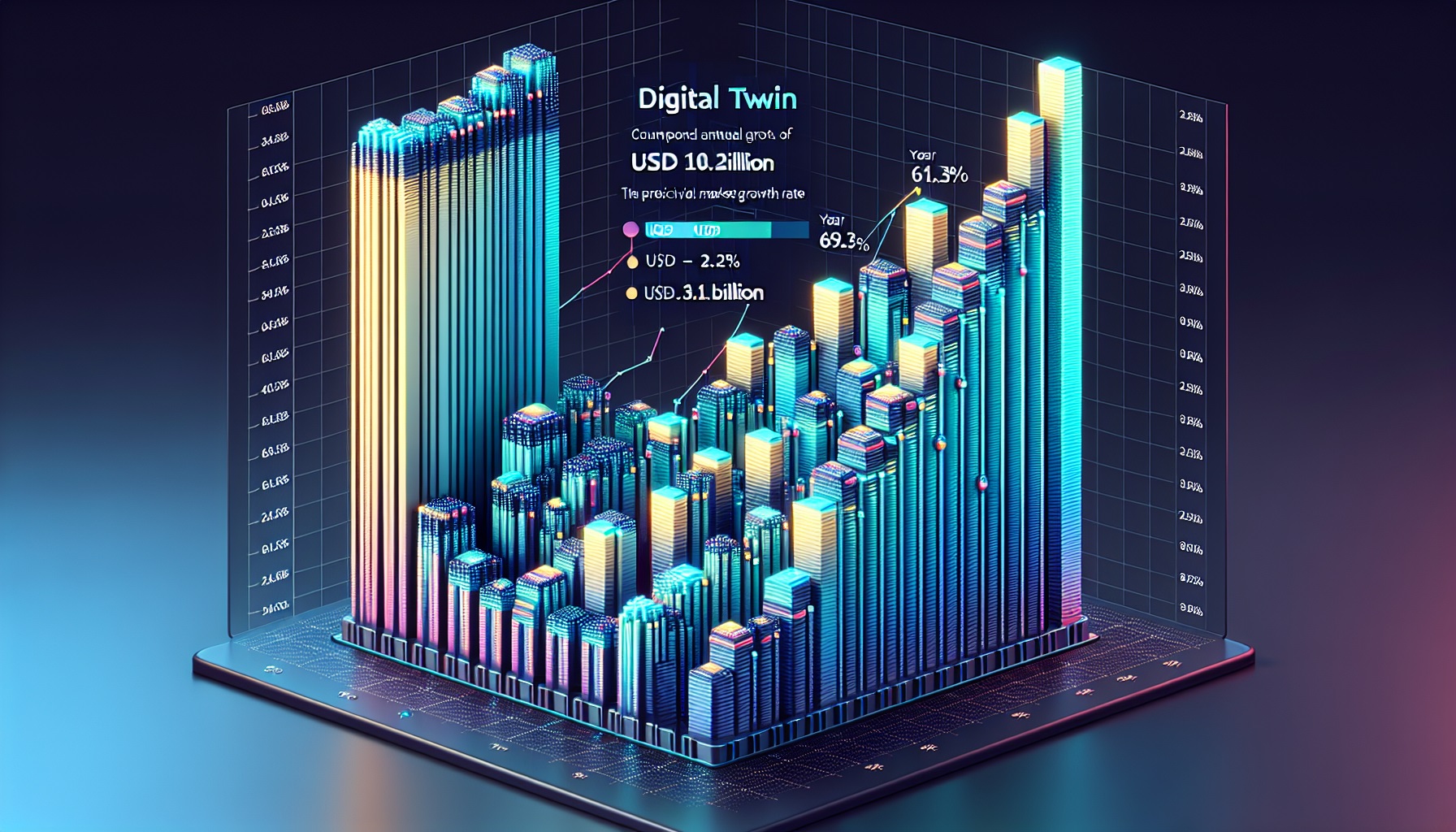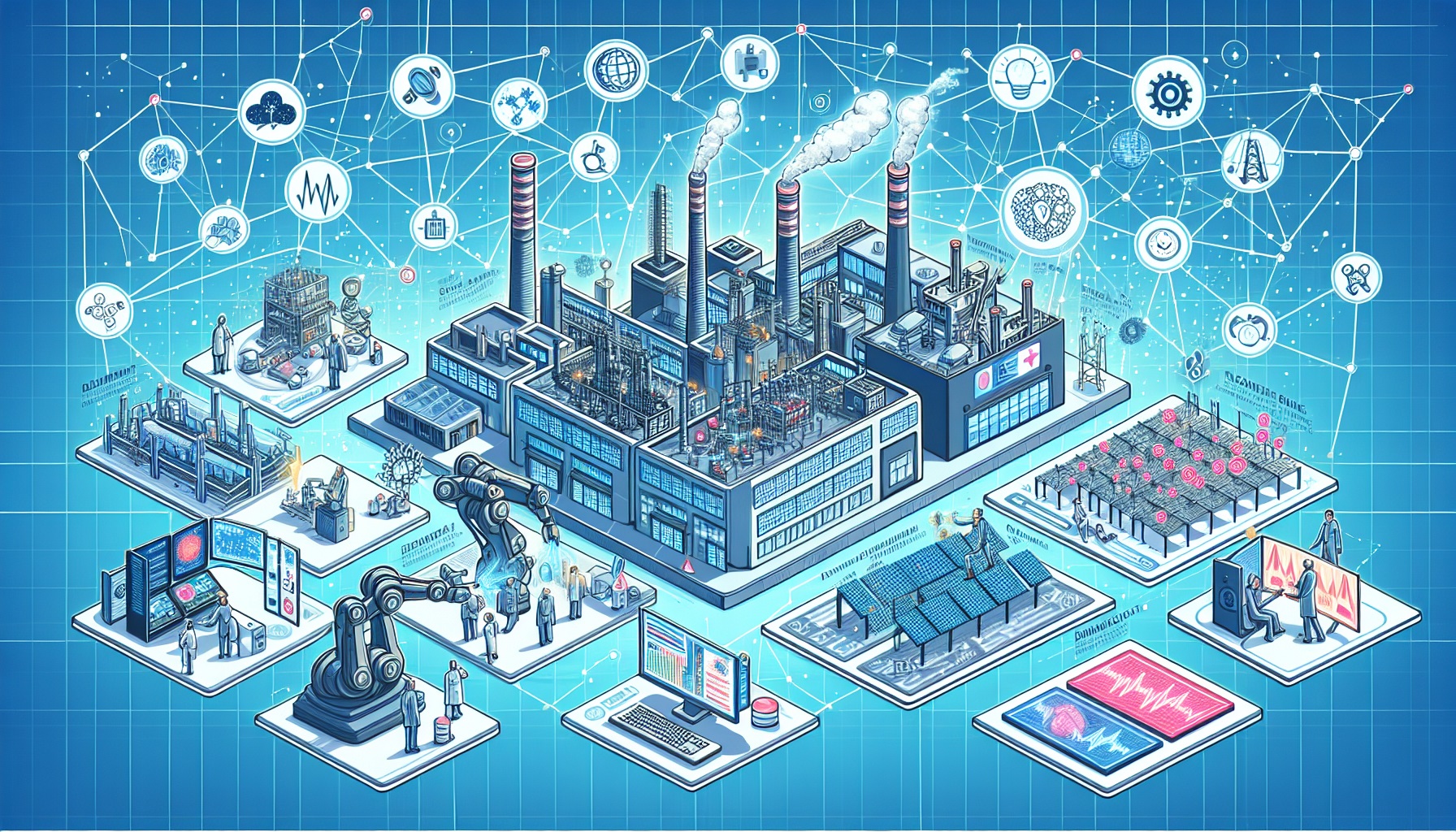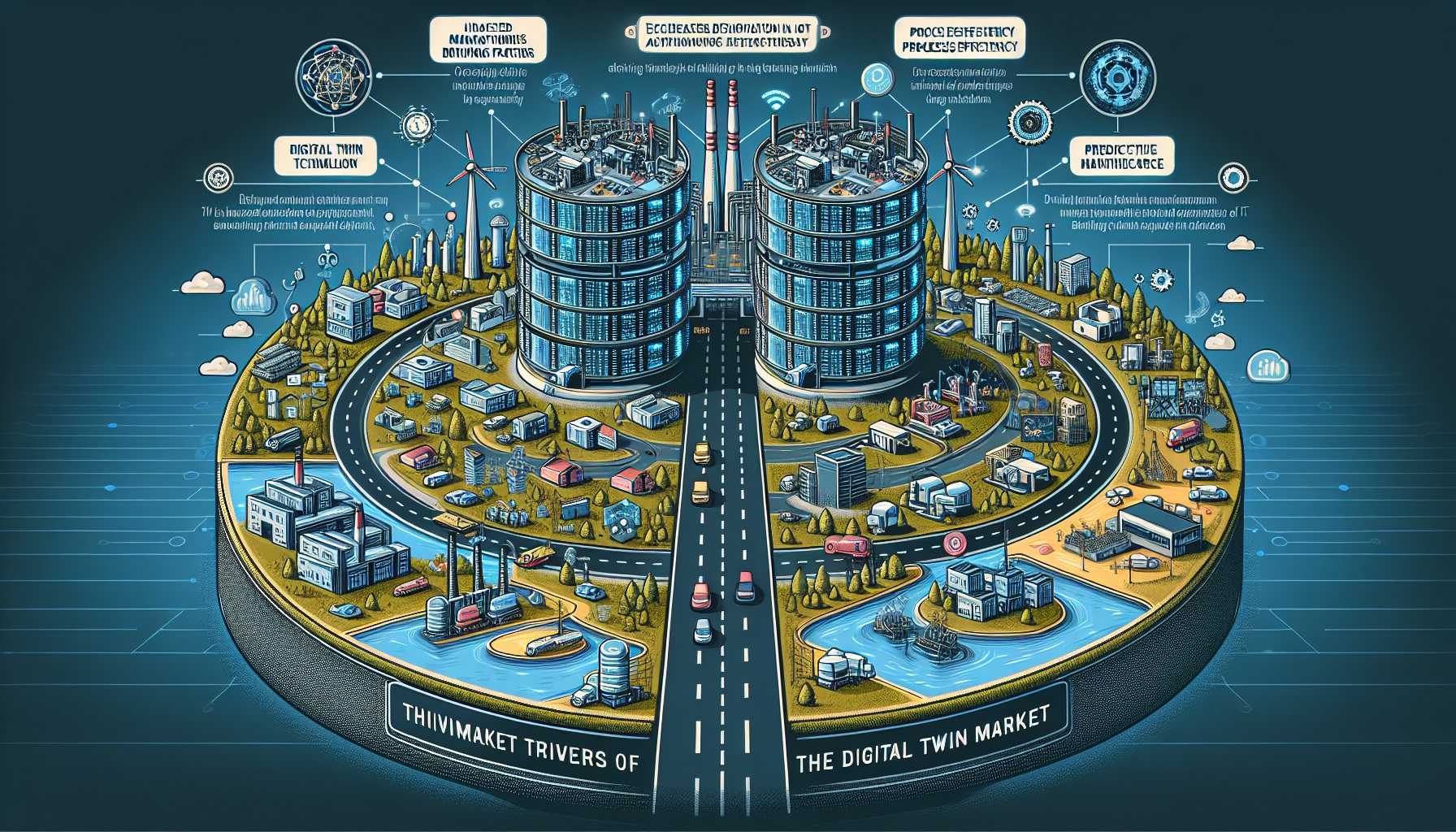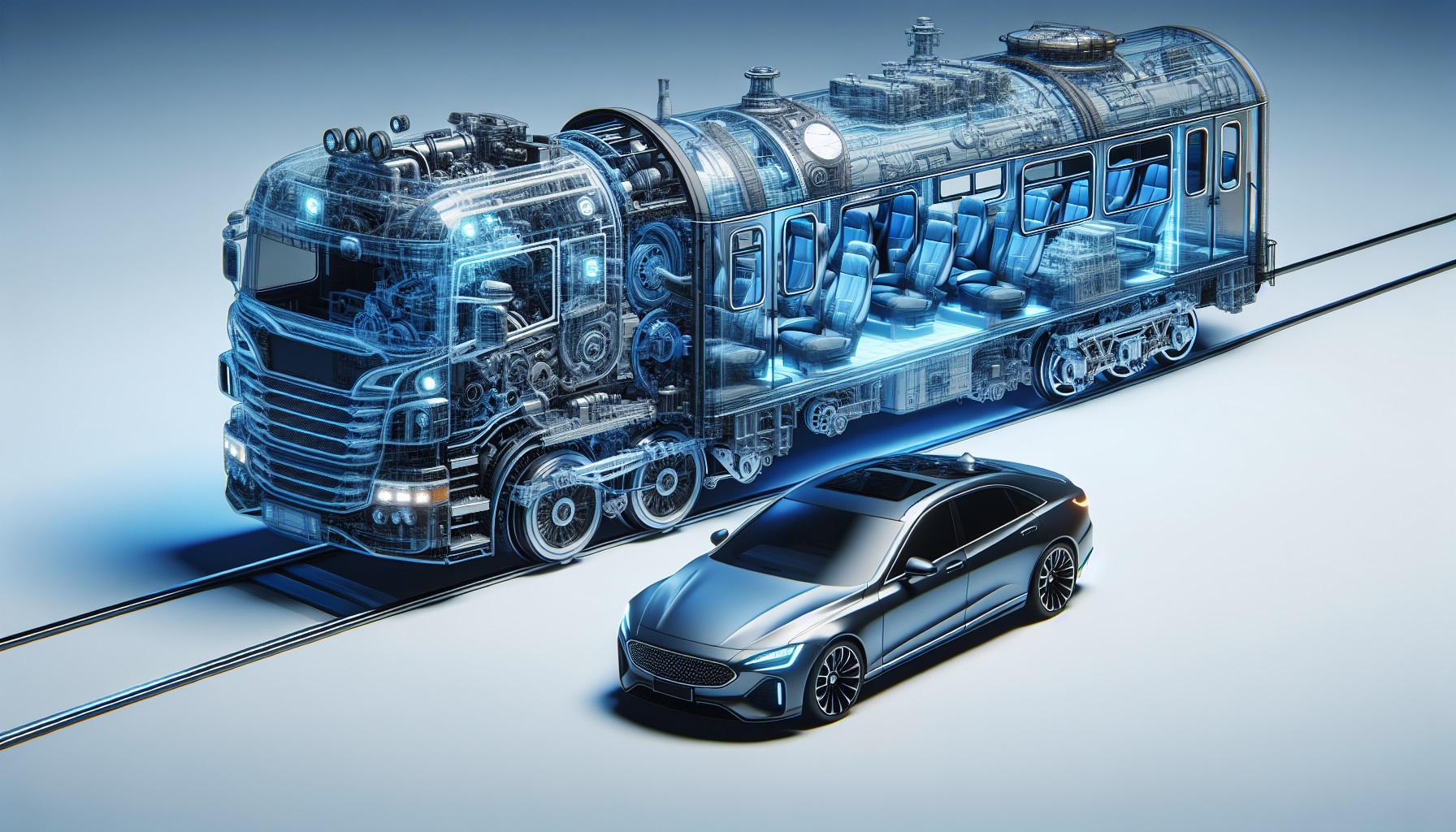Exploring Digital Twin Technology: Market Landscape, Applications and Industry Insights
Digital twin technology is revolutionizing industries across the globe, offering unprecedented insights into complex systems and processes. This cutting-edge innovation creates virtual replicas of physical objects, environments, or processes, allowing for real-time monitoring, analysis, and optimization. As the demand for increased efficiency and productivity grows, digital twin software has become a game-changer in sectors ranging from manufacturing to healthcare, construction to the automotive industry.

The rapid advancement of digital twin applications has led to a surge in market growth and adoption. Companies are leveraging this technology to enhance decision-making, reduce costs, and improve overall performance. From predicting maintenance needs in factories to simulating patient outcomes in hospitals, digital twin technology examples are diverse and far-reaching. As we delve into the current market landscape, industry applications, and future trends, it becomes clear that digital twin technology is poised to shape the future of innovation across various sectors.
Understanding Digital Twin Technology
Digital twin technology has emerged as a powerful tool for bridging the physical and digital worlds. At its core, a digital twin is a virtual representation of a physical object, person, or process that mirrors its real-world counterpart in real-time. This technology enables organizations to simulate, analyze, and optimize complex systems with unprecedented accuracy and efficiency.
Definition and Key Components
A digital twin is more than just a static 3D model. It is a dynamic, data-driven representation that continuously updates based on real-time information from its physical counterpart. The key components of a digital twin include:
- Physical Entity: The real-world object, system, or process being replicated.
- Virtual Model: A digital representation of the physical entity.
- Data Connection: Real-time data flow between the physical and virtual entities.
- Analytics and Visualization: Tools for processing and presenting insights derived from the data.
Types of Digital Twins
Digital twins are virtual models that mirror physical objects, systems, or processes in the real world, allowing for simulation, analysis, and monitoring. These twins can be categorized based on their scope and application into four main types:
-
Component Twins:
- Description: These are digital representations of individual parts or components within a larger system.
- Example: For instance, in a jet engine, a component twin could represent just the turbine blade, monitoring its condition and performance.
-
Asset Twins:
- Description: These digital twins model entire assets, which are typically composed of multiple components.
- Example: A digital twin of a full jet engine, including all its individual parts, would be an asset twin. It allows for monitoring and analysis of the engine's overall performance and condition.
-
System Twins:
- Description: These twins simulate the interaction between various assets or processes within a broader system.
- Example: In an airport, a system twin might simulate how the jet engines, ground support equipment, and fuel supply systems interact to ensure the timely departure of flights.
-
Process Twins:
- Description: Process twins represent entire workflows or production processes. They offer a macro-level view, allowing for the analysis and optimization of operations.
- Example: A digital twin of a manufacturing process that includes all stages from raw material intake to the finished product could be a process twin. It helps in optimizing the entire production line for efficiency and quality.
Each of these types of digital twins serves a different purpose and is used depending on the level of detail or the scope of the system being modeled.
Benefits of Digital Twins
The implementation of digital twin technology has a significant impact on various aspects of business operations:
- Reduced Time to Market: Digital twins can cut development times by up to 50%, allowing for rapid iterations and optimizations of product designs.
- Improved Product Quality: By simulating products in manufacturing and service environments, companies can identify and address design flaws early in the development process.
- Enhanced Decision-Making: Digital twins provide real-time visibility into operations, enabling faster and more informed decision-making.
- Predictive Maintenance: By monitoring asset performance in real-time, organizations can predict and prevent equipment failures before they occur.
- Increased Operational Efficiency: System and process twins help optimize workflows, reduce downtime, and improve resource allocation.
- Customer Experience Enhancement: Product twins enable companies to offer personalized services and proactive maintenance, improving customer satisfaction.
- Sustainability Improvements: Digital twins provide insights that can help organizations optimize resource usage and reduce their environmental impact.
As digital twin technology continues to evolve, its applications are expanding beyond manufacturing into sectors such as healthcare, logistics, and urban planning. The ability to create virtual replicas of complex systems has opened up new possibilities for innovation, efficiency, and problem-solving across industries.
Current Market Landscape
Market Size and Growth Projections
The digital twin technology market is experiencing explosive growth, with projections indicating a substantial increase in market size over the coming years.

In 2023, the global digital twin market was valued at USD 10.1 billion. Looking ahead, it is expected to reach USD 110.1 billion by 2028, growing at a remarkable compound annual growth rate (CAGR) of 61.3% during the forecast period. This rapid expansion underscores the increasing adoption and importance of digital twin technology across various industries.
Key Players and Competitive Analysis
The digital twin market is characterized by intense competition and innovation, with several major players vying for market share. Key companies in this space include:
- U.S.-based giants: General Electric, Microsoft, IBM, Amazon Web Services, ANSYS, PTC, and Autodesk
- European powerhouses: Siemens (Germany), Dassault Systèmes (France), SAP SE (Germany)
- Asian contenders: Hitachi Ltd. (Japan)
These industry leaders are focusing on offering industry-specific services and expanding their geographical presence through strategic collaborations and acquisitions. They are also investing heavily in research and development to drive product innovations and maintain their competitive edge.
Regional Market Trends
North America currently dominates the global digital twin market, accounting for a 34.55% share in 2023. The region's leadership can be attributed to:
- Early adoption of new technologies
- Presence of major industry players
- Technological advancements in aerospace, manufacturing, and automotive sectors
Europe is also a significant player in the digital twin market, with countries like Germany, France, and the UK embracing Industry 4.0 practices. The region is applying digital twin technology in manufacturing, construction, and infrastructure projects.
Asia Pacific is experiencing rapid growth in digital twin adoption across various industries. Countries such as China, India, Japan, and South Korea are incorporating this technology to improve efficiency, drive innovation, and enhance decision-making processes. The region is also leveraging digital twins for smart city initiatives.
As the digital twin market continues to evolve, it is expected to expand beyond traditional manufacturing applications, finding new use cases across diverse sectors and driving further innovation in the coming years.
Industry Applications and Use Cases
Digital twin technology has found widespread adoption across various sectors, revolutionizing operations and decision-making processes. This section explores the applications and use cases of digital twins in manufacturing, healthcare, and smart cities.

Manufacturing and Industrial IoT
In the manufacturing industry, digital twins have become indispensable tools for optimizing production lines and improving overall efficiency. These virtual replicas utilize sensors and IoT devices to collect real-time data from physical assets, creating a comprehensive digital representation of the work site. This technology allows operations teams to monitor asset performance, make data-informed decisions, and enhance productivity.
Digital twins in manufacturing offer several key benefits:
- Real-time monitoring and analysis of production lines and equipment
- Optimization of workflows and resource allocation
- Predictive maintenance capabilities
- Improved product quality through early detection of defects
- Enhanced worker safety and emergency response procedures
For example, solutions like Spot-r provide manufacturers with full visibility into equipment usage, downtimes, and authorized users through an intuitive dashboard. This technology enables remote monitoring and control of equipment assets, helping to create accurate maintenance schedules and reduce unexpected downtimes.
Healthcare and Life Sciences
The healthcare sector has embraced digital twin technology to improve patient care, optimize resource utilization, and enhance overall operational efficiency. Digital twins in healthcare encompass various applications, from creating virtual representations of hospital environments to simulating human physiology.
Key applications in healthcare include:
- Efficient design of new products and processes
- Optimization of hospital workflows and resource management
- Real-time health monitoring through wearable devices
- Simulation of clinical trials using synthetic data
- Strategic planning for hospital operations
For instance, during the COVID-19 pandemic, GE Healthcare's command center technology was utilized to track bed and ventilator capacity data across hospitals in Oregon. This application of digital twins helped maximize the utilization of critical resources and mitigate the risk of decision-making in silos.
Smart Cities and Infrastructure
Digital twin technology is transforming urban planning and management by creating virtual replicas of entire cities. These comprehensive models enable city planners and government representatives to simulate scenarios, optimize infrastructure, and make data-driven decisions to improve urban life.
Applications of digital twins in smart cities include:
- Traffic management and optimization of transportation networks
- Energy grid monitoring and optimization
- Water management and waste disposal planning
- Emergency response and public safety enhancements
- Urban planning and sustainable development
For example, New York City's digital twin model is already helping to improve energy efficiency and better manage urban growth. As cities worldwide adopt digital twin urban planning, they are paving the way for more intelligent and sustainable urban development in the future.
Digital Twin Market Drivers
The digital twin technology market is experiencing significant growth, driven by several key factors that are shaping the industry landscape. These drivers are propelling the adoption of digital twin solutions across various sectors, enabling organizations to enhance their operational efficiency, reduce costs, and drive innovation.

Industry 4.0 and Smart Manufacturing
The advent of Industry 4.0 and smart manufacturing has emerged as a major catalyst for the digital twin market. This technological revolution has created a demand for advanced solutions that can bridge the gap between physical and virtual worlds. Digital twins have become an integral part of this transformation, offering manufacturers the ability to create virtual replicas of their production lines and processes.
By leveraging digital twin technology, companies can optimize their operations, improve product quality, and reduce time to market. For instance, digital twins enable real-time monitoring and analysis of production lines, allowing operations teams to make data-informed decisions and enhance productivity. This capability has become increasingly valuable as manufacturers strive to remain competitive in a rapidly evolving industrial landscape.
Increasing Adoption of IoT and Cloud
The growing adoption of Internet of Things (IoT) and cloud computing technologies has significantly contributed to the expansion of the digital twin market. These technologies provide the foundation for collecting, processing, and analyzing vast amounts of data in real-time, which is essential for creating accurate and dynamic digital representations.
IoT sensors installed on physical assets gather critical information such as vibration, temperature, and other vital factors. This data is then transmitted to the digital twin, enabling real-time processing and analysis. The integration of cloud computing further enhances the scalability and accessibility of digital twin solutions, allowing organizations to leverage these virtual models across various locations and devices.
Moreover, the combination of IoT and digital twins offers several benefits:
- Enhanced visibility into asset performance
- Improved decision-making through data-driven insights
- Optimized resource allocation and utilization
- Increased operational efficiency and cost savings
Need for Predictive Maintenance
One of the most compelling drivers of digital twin adoption is the growing demand for predictive maintenance capabilities. As organizations seek to minimize downtime and reduce maintenance costs, digital twins have emerged as a powerful tool for anticipating and preventing equipment failures.
Digital twins enable engineers to monitor asset performance in real-time, identify potential issues before they escalate, and schedule maintenance activities proactively. This approach has a significant impact on operational efficiency and cost reduction:
|
Benefit |
Impact |
|
Reduced Downtime |
Up to 50% decrease in unscheduled maintenance |
|
Cost Savings |
10-40% reduction in maintenance costs |
|
Extended Asset Lifespan |
3-5 years increase in equipment life expectancy |
By leveraging digital twins for predictive maintenance, businesses can address performance issues without under or over-investing in critical resources. This capability has become particularly valuable in industries such as manufacturing, aerospace, and energy, where equipment failures can result in substantial financial losses and safety risks.
Digital Twin Adoption Across Industries
The adoption of digital twin technology is rapidly expanding across various industries, revolutionizing operations and decision-making processes. This section explores how digital twins are transforming the automotive and transportation, aerospace and defense, and energy and utilities sectors.

Automotive and Transportation
The automotive industry has embraced digital twin technology to enhance product development, optimize manufacturing processes, and improve vehicle performance and safety. Digital twins in this sector create virtual replicas of entire vehicles, including software, mechanics, and electrical systems. This technology allows manufacturers to simulate and test new designs, optimize production processes, and predict maintenance needs.
Key applications in the automotive industry include:
- Product testing: Virtual modeling and testing of components like tires under various conditions.
- Manufacturing capacity planning: Simulating the impact of new machinery on production capacity.
- Employee training: Setting up virtual factory infrastructures for remote training.
- Predictive maintenance: Leveraging real-time data from IoT devices to detect faults and optimize maintenance schedules.
- Sales enhancement: Allowing potential buyers to explore virtual 3D models of vehicles and provide feedback before production.
Aerospace and Defense
In the aerospace and defense sector, digital twins provide virtual representations of aircraft, satellites, and even semiconductor subsystems. This technology has evolved from focusing solely on mechanical parts to encompassing electronic systems, driven by the increasing complexity of compute platforms and improved modeling capabilities.

Digital twins in aerospace and defense offer several benefits:
- Augmenting or replacing physical prototypes, reducing costs and development time.
- Facilitating early hardware and software integration testing.
- Enabling virtual software testing and safety evaluations.
- Supporting certification processes according to industry standards like DO-178C/ED-12C or DO-254/ED-80.
Energy and Utilities
The energy and utilities sector is undergoing a digital renaissance, with digital twin technology playing a crucial role in improving operations, sustainability, and customer service. AI-powered digital twins are setting new benchmarks in how energy companies operate and evolve.
Key applications in the energy and utilities industry include:
- Real-time monitoring and analysis of energy grids.
- Running simulations to predict power consumption and explore load balancing options.
- Predictive maintenance to prevent downtime and extend infrastructure lifespan.
- Optimization of energy generation and system performance.
- Enhancing customer service through personalized energy-saving advice and proactive service adjustments.
As digital twin technology continues to advance, its adoption across these industries is expected to drive innovation, improve efficiency, and create new opportunities for growth and sustainability.
Future Outlook and Emerging Trends
Digital twin technology is causing a revolution in various industries, offering unprecedented insights and optimization opportunities. Its ability to create virtual replicas of physical objects and processes has a significant impact on decision-making, cost reduction, and performance enhancement across sectors like manufacturing, healthcare, and smart cities. The rapid growth of the digital twin market, driven by Industry 4.0, IoT adoption, and the need for predictive maintenance, highlights its increasing importance in shaping the future of innovation.
As digital twins continue to evolve, their applications are expanding beyond traditional use cases, opening up new possibilities to improve efficiency and drive innovation. The technology's potential to transform industries, from automotive and aerospace to energy and utilities, underscores its crucial role in the digital transformation journey. With ongoing advancements and increasing adoption, digital twin technology is set to play a key part in shaping the future of various sectors, enabling organizations to stay competitive in an ever-changing business landscape.
Related Reports:
Digital Twin Market by Application(Predictive Maintenance, Business Optimization, Performance Monitoring, Inventory Management), Industry(Automotive & Transportation, Healthcare, Energy & Utilities), Enterprise and Geography - Global Forecast to 2028
Contact:
Mr. Rohan Salgarkar
MarketsandMarkets™ INC.
1615 South Congress Ave.
Suite 103
Delray Beach, FL 33445
USA : 1-888-600-6441
sales@marketsandmarkets.com
This FREE sample includes market data points, ranging from trend analyses to market estimates & forecasts. See for yourself.
SEND ME A FREE SAMPLE





